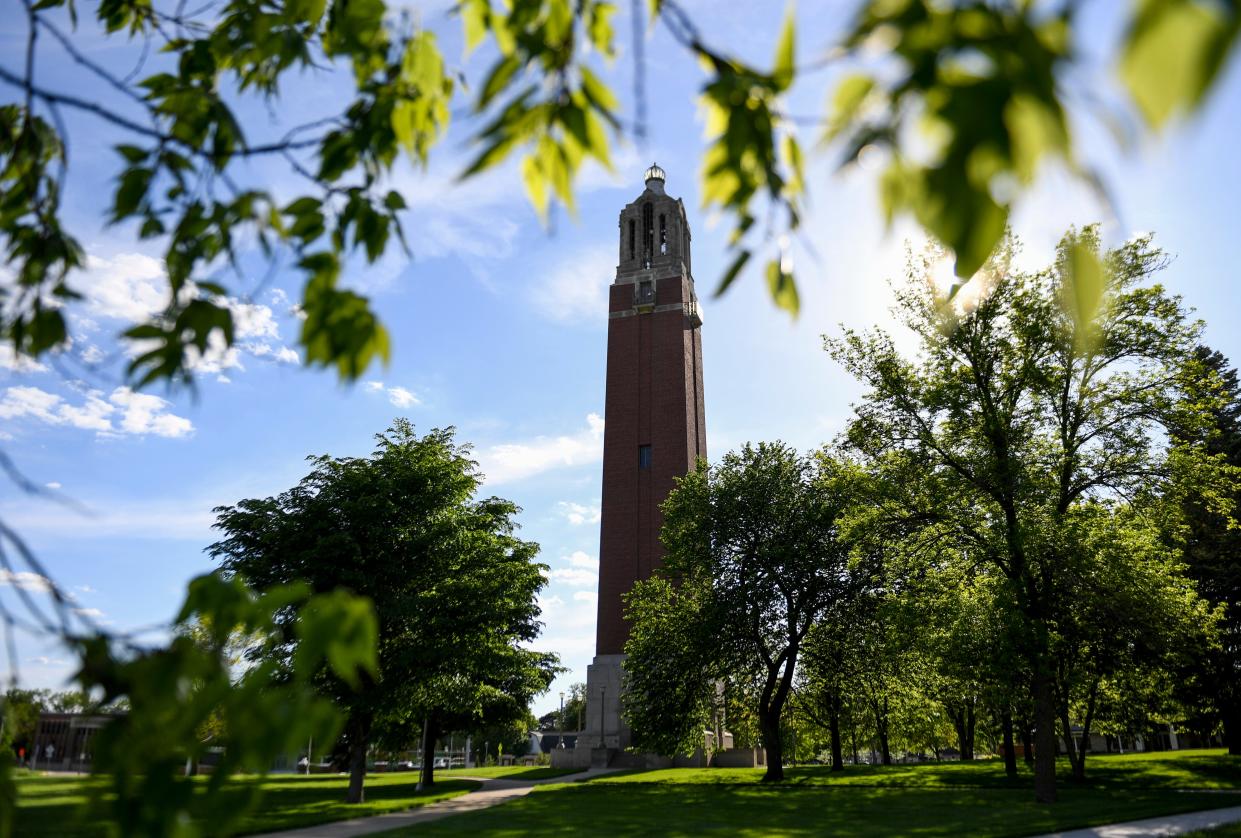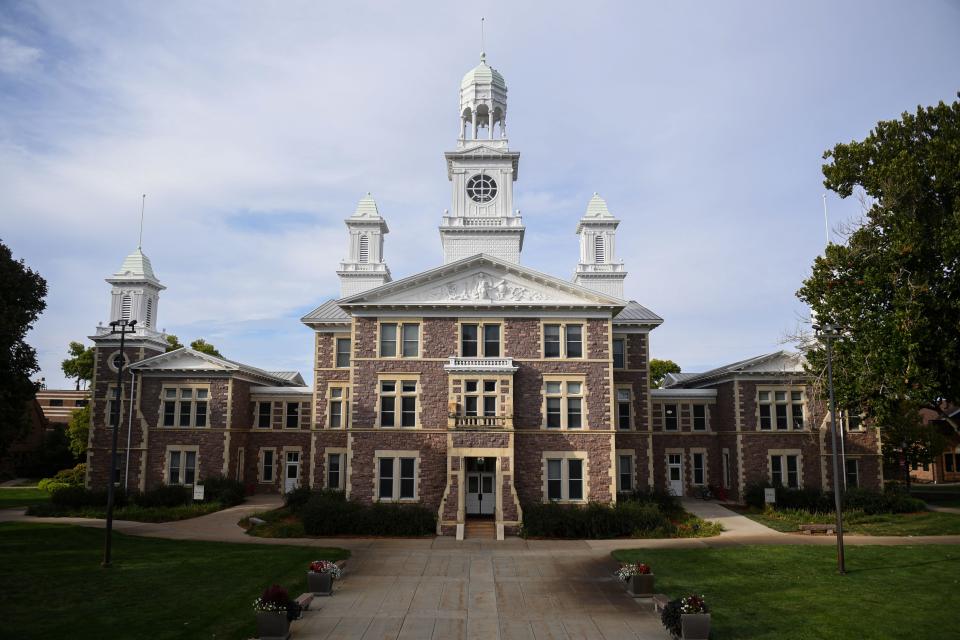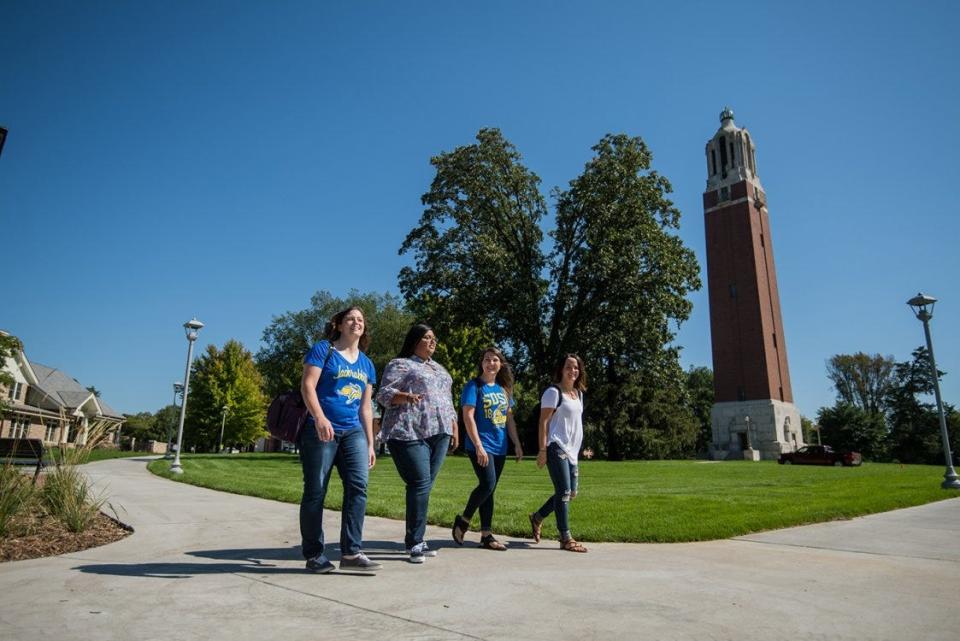South Dakota colleges look to raise graduation, placement rates

Each year, an average of nearly 700 out-of-state students who graduate from a public South Dakota university choose to work and live in the state after graduation. State leaders hope to increase that number to help fill the estimated 29,000 jobs currently available.
Northern State University graduate Madi Filber exchanged her Wisconsin license for South Dakota residency this summer.
Filber, who is from West Bend, Wisconsin, graduated in May with a bachelor’s degree in English and a minor in digital media. Three months later, she works in the office of an auto shop in Aberdeen and plans to pursue freelance editing in the future.
“I just kind of like the area, and I really like the life that I built out here,” Filber said.
When she first stepped on Northern State University’s campus, Filber didn’t know anyone. However, with family only a few hours away, she figured a visit was worthwhile.

“I had never been to South Dakota before. I was like, ‘Hey, I’m gonna go visit some family and there’s a college like four hours west of them. Maybe I’ll go visit that one too.’ And I did and I loved it,” she said.
After forging friendships with students who lived in or nearby Aberdeen, meeting her boyfriend and growing to love the mid-size feel of the town, Filber knew she wanted to stay in South Dakota.
Postsecondary education institutes across South Dakota hope other out-of-state students find that same desire to stay in South Dakota after graduation.
With the high number of job openings in the state, many South Dakota universities are striving to raise graduation rates and the number of students who stay in the state after receiving their degree.
The most recent data in the 2023 Board of Regents Factbook shows that nearly 51% of students who graduated from one of the Board of Regents’ six universities in the 2020-2021 school year secured jobs and stayed in South Dakota after graduation.
At the state’s four technical schools, 87% of students who graduated in 2021-2022 were working in South Dakota or continuing their education six months after graduation, according to a report from the state’s Board of Technical Education.
Mount Marty University, a private college in Yankton, sees roughly 70% of its students stay in South Dakota after graduating, said Katie Harrell, the school’s vice president for student success and Title IX coordinator. Nearly 20% of those graduates stay in the Yankton area, she said.
Placing more South Dakota college graduates into the state’s workforce begins, in part, with increasing the number of students who graduate from a school in the state.
The Board of Regents, which governs the state’s six public colleges, has seen the percentage of students who graduate within six years increase by 5.3% since 2012, according to SDBOR Factbook data. In 2022, the graduation rate reached 59.4%.
Iowa public colleges hovered around a 72% graduation rate in 2022, according to Iowa Regents data. The North Dakota University System sat at a 60% graduation rate that year while the Montana University System reached 52.9%.

Mount Marty University has held an average graduation rate of 60-65%, Harrell said.
Roughly 66% of first-time students who enrolled full-time at one of South Dakota’s technical schools in 2018 graduated within three years, according to a 2023 priorities report from the board.
The push to increase South Dakota’s graduation rates will strengthen in the coming years.
Gov. Kristi Noem sent a letter to the Board of Regents in May, spurring it to increase the graduation rate at the six regents schools to 65% by 2028.
“Our goal that we previously had was 64% by ‘27, so yes, 65% by ‘28 tracks with our goal and the direction that we’re hoping to head,” said Nathan Lukkes, the executive director and CEO of the Board of Regents.
Lukkes said finances and affordability rank as one of the most common factors that the Board of Regents hears as students’ reasons for dropping out.
According to a Gallup and Lumina Foundation report from 2022, more than half of adults who have unenrolled in college say the cost has prevented them from continuing their education.
A scholarship funded by First PREMIER Bank, the state of South Dakota, Avera Health and Sanford Health works to ease some of that financial burden while also encouraging students to stay in South Dakota post graduation.
South Dakota students who demonstrate financial need on the Free Application for Federal Student Aid (FAFSA) form and plan to attend a college in the state are eligible for the Freedom Scholarship, which was established in 2021.
However, the financial assistance comes with a price.
Recipients must commit to live and work in the Mt. Rushmore state for a minimum of three years after their college graduation. If they fail to do so, the scholarship will become a loan with a 4% fixed interest rate.
The Build Dakota scholarship employs similar requirements.
Students enrolled full-time in a high-need industry program at one of the state’s technical colleges can receive funding for their program expenses if they agree to work in their field of study in South Dakota for a minimum of three years after graduation.
In July 2023, South Dakota had 38,127 job openings. North Dakota had 13,645 online job openings in July and Montana had 17,469 openings posted to MontanaWorks.gov in June.
Nursing, health care, engineering, business, agriculture and computer science rank among the top graduating degrees at South Dakota schools, Lukkes said.
The Board of Regents and the state’s Department of Education recently rolled out the Dakota Dreams program, which works to prepare, educate and inform students on career choices, Lukkes said.
The program’s website provides resources for college prep, such as online tutoring for K-12 students and career exploration summer camps. Dakota Dreams also offers assistance in budgeting and paying for college.
Internships also act as a valuable tool in making students residents of the state after graduation, as they often become full-time positions, Harrell said.
Lukkes said internships allow students to build relationships with employers and learn about the opportunities that await them in South Dakota.
“If we get students in the door, we get them in South Dakota,” Lukkes said.
— This article was produced by South Dakota News Watch, a non-profit journalism organization located online at sdnewswatch.org.
This article originally appeared on Sioux Falls Argus Leader: South Dakota colleges look to raise graduation, placement rates


